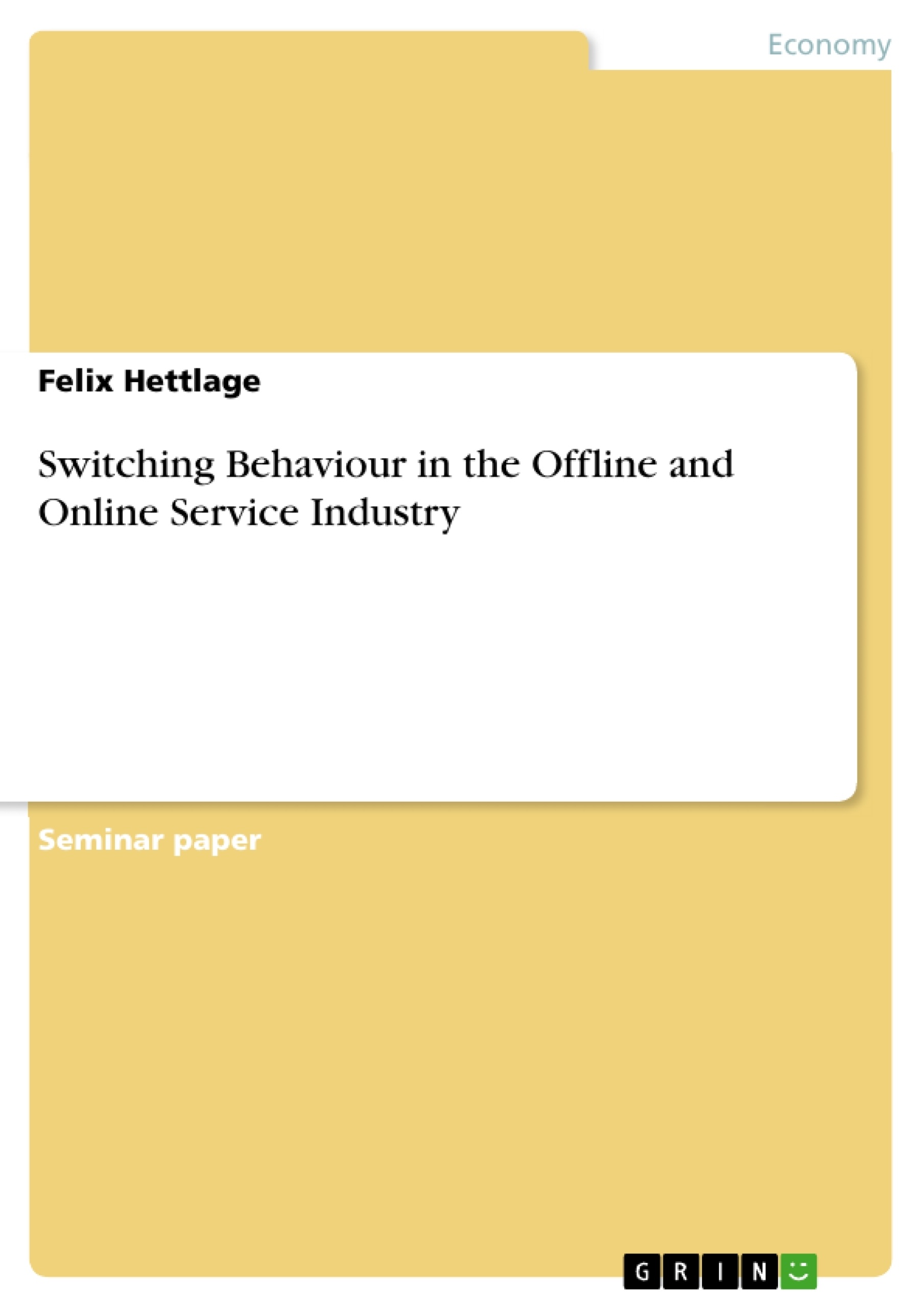When in the early 90s the internet became a mass medium, the service industry recognized the potential of this new media. Quickly, several online service providers like Yahoo or AOL were established. These new internet companies tried to take advantage of being the first mover, by acquiring new customers. In the beginning this was fine, since more and more people obtained access and became potential costumers. Following a typical situation of excess demand and hence, the established online service provider could afford to focus more on gaining new customers than on retaining existing ones. However, this picture turned completely the more popular the internet became and the more new start-ups saw their opportunities to penetrate the e-commerce arena. This led to a shift from excess demand to excess supply in the online service industry. Consequently, the situation of increased competition was followed by a loss of market share and lower profit margins and the strategy of steadily acquiring new customers became ever harder to pursue, so that the companies had to rethink their. In order to stay competitive the companies have to focus more on the retention of existing customers rather than on searching for new ones. This situation is comparable to the offline service industry. The offline service industry also experienced decades of prospering growth and now faces a situation of a saturated market. The acquiring of new customers has become extremely difficult and costly and retaining existing ones has become harder and harder due to an increased customer willingness to switch the service provider.
With respect to today’s rapidly changing economy, it becomes increasingly important for managers in both the offline and online service industry to explicitly identify the reasons that drive customers to switch their service provider. Additionally, it is also extremely important for the online industry, whether they can build on the experiences made in the offline service industry or whether these experiences and approaches are not valid in the internet world. Each of these facets will be illuminated, focusing the analysis on the following core question:
Is the customer switching behaviour substantially different in the online service industry as compared to the offline industry? [...]
Inhaltsverzeichnis (Table of Contents)
- 1. INTRODUCTION:
- 2. THE OFFLINE SERVICE INDUSTRY
- 2.1 SWITCHING BEHAVIOUR IN THE OFFLINE SERVICE INDUSTRY
- 2.1.1 Factors influencing switching
- 2.1.2 Switching barriers
- 2.2 RELATIONSHIP MARKETING (OFFLINE)
- 3. THE ONLINE SERVICE INDUSTRY
- 3.1 SWITCHING BEHAVIOUR
- 4. OFFLINE AND ONLINE SWITCHING BEHAVIOUR: SIMILARITIES AND DIFFERENCES
- 4.1 SIMILARITIES IN SWITCHING BEHAVIOUR: ONLINE AND OFFLINE
- 4.1.1 Factors influencing switching behaviour (Similarities: online and offline)
- 4.1.2 Switching barriers (offline and online)
- 4.2 DIFFERENCES IN SWITCHING BEHAVIOUR: ONLINE AND OFFLINE
- 4.2.1 Factors influencing switching behaviour (Differences: online and offline).
- 4.2.2 Switching barriers (online and offline).
- 5. FUTURE OUTLOOK
- 5.1 OUTLOOK FOR THE OFFLINE SERVICE INDUSTRY
- 5.2 OUTLOOK FOR THE ONLINE SERVICE INDUSTRY
- 6. CONCLUSION
Zielsetzung und Themenschwerpunkte (Objectives and Key Themes)
This paper investigates the customer switching behavior in the service industry, examining similarities and differences between online and offline contexts. The primary objective is to determine if customer switching behavior is significantly different in the online service industry compared to the traditional offline industry. This analysis will explore key factors driving switching decisions, including price, service quality, and the influence of switching barriers. Key themes explored in this paper include:- The evolution of the service industry in the online and offline context
- Factors influencing customer switching behavior in both online and offline service industries
- Switching barriers present in both online and offline service industries
- The impact of relationship marketing on customer retention in the offline service industry
- The future outlook for customer switching behavior in both online and offline service industries
Zusammenfassung der Kapitel (Chapter Summaries)
The paper begins with an introduction outlining the growing significance of understanding customer switching behavior in the service industry, especially in the context of increasing competition and market saturation. It sets the stage for exploring how the online service industry has evolved from a period of excess demand to one of excess supply, mirroring the challenges faced by the offline service industry. Chapter 2 delves into the characteristics of the offline service industry. It examines the factors influencing customer switching decisions, highlighting Keaveney's eight factors that can drive customers to switch, such as price, inconvenience, and service failures. The importance of customer satisfaction, service quality, and attitude towards switching are also emphasized. This chapter also discusses switching barriers, such as interpersonal relationships, perceived switching costs, and the attractiveness of competing alternatives. The role of relationship marketing in building customer loyalty and reducing switching incentives is also discussed. Chapter 3 provides an overview of switching behavior in the online service industry, setting the stage for the comparative analysis in Chapter 4. Chapter 4 explores the similarities and differences in switching behavior between the online and offline service industries. The analysis focuses on identifying shared factors influencing switching decisions and common switching barriers. Chapter 5 provides a future outlook for the online and offline service industries. The conclusion summarizes the main insights of the study, leaving the major findings and concluding remarks for the full text.Schlüsselwörter (Keywords)
This paper focuses on the concepts of switching behavior, service industry, online and offline service industry, customer satisfaction, service quality, switching barriers, relationship marketing, and customer retention.- Citar trabajo
- Felix Hettlage (Autor), 2002, Switching Behaviour in the Offline and Online Service Industry, Múnich, GRIN Verlag, https://www.grin.com/document/10977



